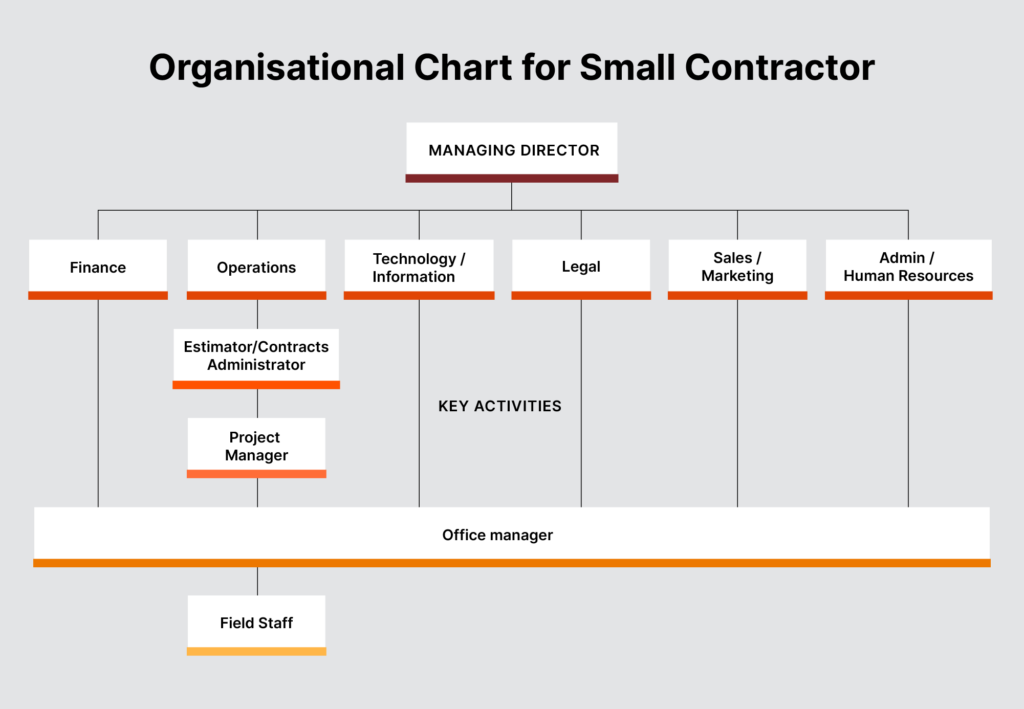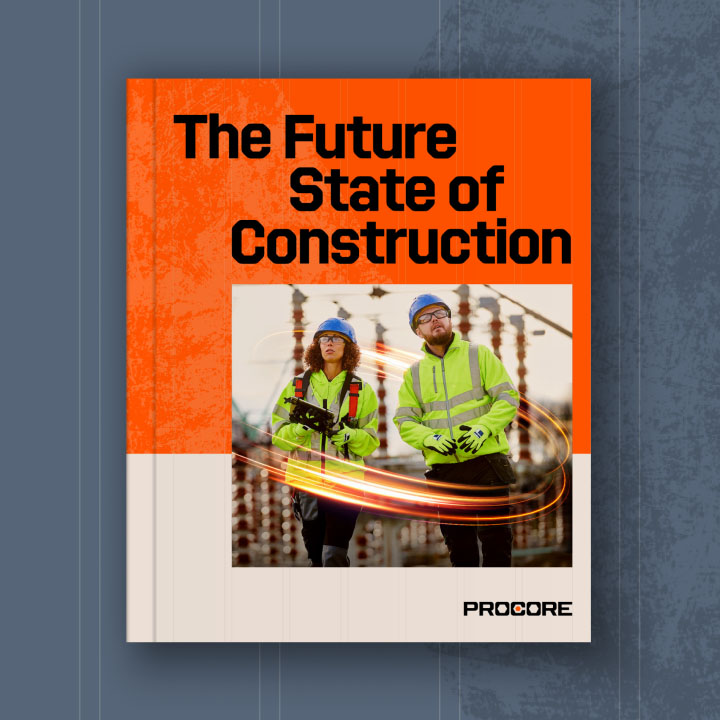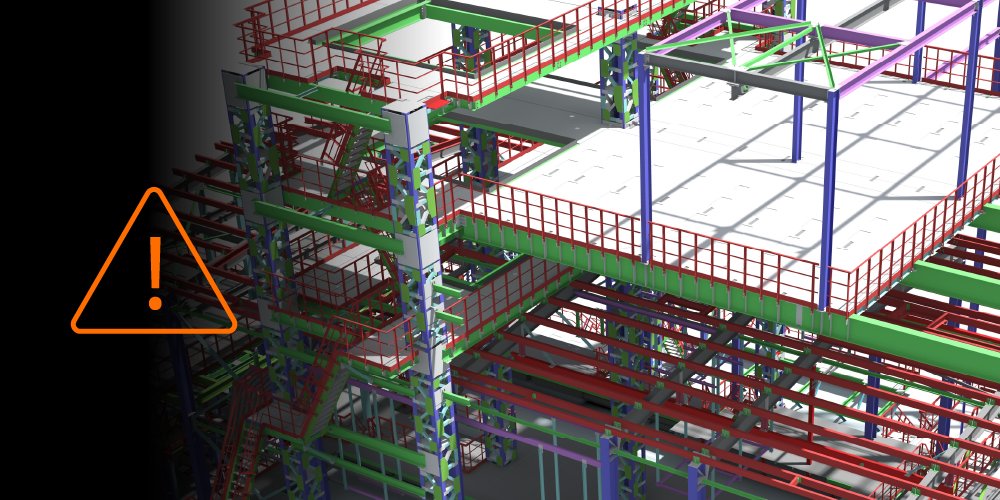Related Articles
— 9 min read
Organisational Chart: Creating A Construction Hierarchy

Last Updated Jul 25, 2025

Michelle Stack
Senior Strategic Product Consultant
11 articles
Michelle Stack is a Senior Strategic Product Consultant at Procore, bringing over 20 years of experience in project management, IT solutions, and change transformation. For 7 years, she has led technology change in the construction industry working closely with teams in design and construction through to post completion. Throughout her career, Michelle has successfully aligned operations with organisational strategies, ensuring changes are implemented through clear communication, training, and evaluation. Her extensive expertise has made her a trusted leader in driving effective, sustainable transformations.
Last Updated Jul 25, 2025

An organisational chart is an important component of any construction business, offering a visual representation of the hierarchy and delineating decision-making responsibilities within the company. An effective org structure clarifies responsibilities, promotes informed decision-making and eliminates bottlenecks. This article explores common roles in Australian based construction companies and their typical positions in an organisational chart, as well as different approaches to organising teams for efficient operations at scale.
Table of contents
The Importance of an Organisational Chart
Prevents Overlap
By delineating specific roles and responsibilities, org charts help prevent overlap and confusion. Each position has a clearly defined scope, minimising the risk of redundant work.
Facilitates Proper Delegation
Org charts aid in assigning tasks appropriately and maintaining efficiency. Proper delegation helps stop bottlenecking.
Aids in Training
For new employees, understanding a company's organisational structure can be overwhelming. A well-designed org chart provides a clear picture of the company’s hierarchy, helping new hires quickly grasp who is responsible for what and where they fit within the organisation.
Hierarchy in a Construction Company
While each construction company is unique in terms of geographical location, types of projects and personnel, there are common organisational structures that well-designed companies typically follow.
Regardless of the company size, the responsibilities associated with different tiers remain consistent. Large companies may allocate these responsibilities across multiple individuals, whereas smaller firms may consolidate multiple duties in a single role.
Construction companies have distinct levels, or tiers, of responsibility. Progressing down the organisational chart, roles transition from strategic and managerial to task-specific. At the lower levels, there could be numerous employees, each handling a segment of the overall work.
Ownership
In large construction firms, a board of directors often sets the company's overarching direction, with a chief executive officer (CEO) reporting to them. Smaller contractors may have a single individual, such as the managing director or owner at the helm.
Executive
The executive team collaborates closely with the CEO to develop and disseminate company strategy. Large construction companies typically have a varied executive team, each member leading a specific division. Titles such as "Chief Operating Officer ” and “Chief Financial Officer (CFO)” or “Executive General Managers” — are common.
General Managers
In larger construction companies, several general managers (GM) operate under the executives. For instance, there may be a marketing GM, engineering GM, sales GM and GM of operations. Generally, the engineering and operations GMs report to the chief operating officer (COO), whereas the Sales and Marketing Directors may report to the chief marketing officer (CMO).
Manager
Below the general manager level is the managerial tier. Managers oversee their respective teams, with roles such as financial managers, accountants, marketing managers, preconstruction managers, construction managers, project managers and site managers. Larger companies may have multiple managers across various divisions and projects.
Support
Support staff execute essential tasks to assist managers and directors within each division. They report to managers and hold positions such as assistant managers, office managers, account managers and assistant project managers. In larger firms, these job titles may include several individuals to distribute responsibilities effectively.
Entry-Level
Entry-level roles are crucial starting points, particularly in large construction firms. This tier typically includes assistants, cadets and engineers. Some assistant project managers may also begin at this level.
Linking Organisational Charts to Performance Metrics
An effective organisational chart not only helps define roles and responsibilities but also tracks and improves performance. By clearly outlining reporting relationships and responsibilities, an organisational chart can help monitor key performance indicators (KPIs) and make sure each team member's contributions are aligned with the company's overall goals.
For each new multi-residential project we kicked off, having a project level organisational chart was critical. With project teams being new every time, everyone across the team, including the client, needed to be clear on who was responsible for what. There could otherwise be a tendency to rely on the site manager for the entire success of the project, even though much of it was not within their control. Without a clear org chart, even something as critical as knowing who was responsible for ensuring everyone had access to the latest drawings could get missed.
Being clear on the relationships between our tender team, project delivery team, and management roles ensured that accountability was clear. Being clear on financial responsibilities was especially critical—without that clarity, invoicing and payments could have been seriously delayed. Knowing who could sign off on what made a huge difference. The project director was ultimately responsible for ensuring everything stayed on track.
Having the org structure in place also helped us keep our collaboration strong. Everyone knew where they fit, which meant each part of the project got the attention it needed to succeed. Without that level of organisation, any miscommunication or lapse in responsibility could have thrown the whole project off balance.

Michelle Stack
Senior Strategic Product Consultant
Procore
Steps to Creating an Effective Org Chart
1. Understand business needs.
Begin by assessing the construction company’s specific needs. Consider factors such as the scale of operations, project complexity and the range of services offered. This understanding will help guide the structuring of the org chart to align with the company’s goals and operational requirements.
2. Clearly define roles and responsibilities.
Clearly define each role within the organisation. Specify responsibilities, tasks and expectations for each position. This clarity helps prevent confusion and makes sure that everyone understands their duties and the scope of their work.
3. Establish reporting relationships.
Determine how different roles and departments connect. Establish reporting lines to clarify who reports to whom and how information flows through the organisation. This helps streamline communication and decision-making processes.
Choosing the Right Structure
The structure of an org chart can vary based on the company’s size and operational needs. The two primary types of structures are:
Flat Structure
Common in smaller organisations, a flat structure has fewer layers of management with a more collaborative and flexible work environment. In this structure, employees often have broader roles and more direct communication with higher-level managers.
Functional Structure
Larger organisations often use a functional structure where roles are divided into distinct departments (e.g., finance or operations). Each department is managed separately, and employees report to department heads. This structure allows for specialisation and more defined roles and can create more layers of management.
Maintaining and Updating Org Charts
Org charts need to stay as current as possible. When roles, responsibilities or reporting lines change within the company, the chart should be updated to reflect the current organisational structure.
The org chart must also be easily accessible to all employees. Keeping it available helps employees understand the organisational structure and reporting relationships, which helps improve communication and efficiency.
Factors That Affect Company Structure
Type of Company
Construction companies come in various forms, each with unique organisational needs. Here’s a look at how different types of construction companies might structure their org charts:
Owner/Developers
These companies manage the development and oversight of construction projects. Their org charts often focus on project oversight and financial management. Key roles may include the owner/developer at the top, with layers of management overseeing project development, financial planning and strategic decision-making.
For example, the construction division of a services organisation is often organised under the finance or capital planning department.
General Contractors
Pro Tip
General contractors may also have project specific org charts that span the life of a project and are disbanded at the end of a project. This org chart will show the relationship with the client, and as well as the other roles within the company, and will also include roles such as project directors, site managers, quality managers, safety managers, and marketing managers.
General contractors coordinate the overall execution of construction projects. Their org charts often include roles related to project management, procurement and subcontractor coordination. There may be positions like project managers, construction managers and procurement officers within their structure.
Specialty Contractors
These companies focus on specific construction areas, such as electrical work or plumbing. Their org charts are usually organised around specialised functions and project teams. For example, an electrical contractor might have roles such as electrical project manager, electrical engineer and field electricians.
Company Size
For smaller construction companies, such as those with fewer than 50 employees, individuals often wear multiple hats. For instance, the chief operating officer may also act as the general project manager due to limited resources. These companies should clearly reflect dual roles on their org chart to avoid confusion and ensure everyone understands their responsibilities.
For larger organisations, the organisational chart is more dynamic and should be frequently updated. This flexibility is necessary to accommodate changes such as new hires, layoffs or organisational shifts. An interactive, digital org chart helps manage this complexity by providing real-time updates and a clear view of the reporting structure.
Administrative vs. Project Functions
Construction companies generally have two main employee functions:
- Administrative/Office/Business Functions: These roles focus on the overall management and operation of the business. Examples include finance managers, HR specialists and marketing directors. This lane ensures that the company’s business operations run smoothly and that administrative tasks, such as scheduling, are handled effectively.
- Project Functions: These teams concentrate on delivering and managing specific projects. These roles can include construction managers, estimators and project managers. Project functions are an essential part of construction projects and help tasks to be completed on time and within budget.
Best Practices for Organising a Construction Company
Utilising the org chart is the best way to ensure its efficiency. The chart should be the company's go-to when establishing communication without veering away from it.
When designing and implementing an org chart, consider the following best practices:
Adapt to company size.
Recognise that the structure of an org chart will differ based on the size of a company. Smaller companies might have a simpler structure with fewer layers of management, while larger companies will require a more complex chart with multiple departments and specialised roles.
Maintain flexibility.
Be prepared to adapt the org chart as the company grows or changes. An org chart should be a living document that evolves with the company’s needs. This flexibility helps accommodate new roles, projects and business strategies.
Communicate clearly.
Use the org chart to create a communication flow within the company. Clearly defined roles and reporting lines help employees understand who to approach for various issues and more efficient problem-solving.
Construction Company organisational Chart Examples
The organisational chart for a large construction company can be complex, with roles that are often highly specialised. They may have a whole team of accounts receivable specialists or credit managers, each one assigned to oversee their own specific accounts.

Project teams are often temporary, they may be brought in externally or created internally per project. Within the project team sit their own field staff and site manager. Project teams are often measured on their own respective performance.
For many, construction is still very much a family business. These contractors may only have a handful of employees.

Building the Right Organisational Structure
An effective organisational chart is essential for any construction company, regardless of its size or type. By providing a clear visual representation of roles and reporting relationships, org charts help prevent overlap, promote proper delegation and create efficient
See what’s coming in construction over the next decade.
Download the Future State of Construction Report for insights, trends, and innovations shaping the industry over the next 8–10 years.

Categories:
Written by

Michelle Stack
Senior Strategic Product Consultant | Procore
11 articles
Michelle Stack is a Senior Strategic Product Consultant at Procore, bringing over 20 years of experience in project management, IT solutions, and change transformation. For 7 years, she has led technology change in the construction industry working closely with teams in design and construction through to post completion. Throughout her career, Michelle has successfully aligned operations with organisational strategies, ensuring changes are implemented through clear communication, training, and evaluation. Her extensive expertise has made her a trusted leader in driving effective, sustainable transformations.
View profileExplore more helpful resources

Managing Direct Costs in Construction: How Visibility Drives Profitability
Direct costs define the financial reality of every construction project. They cover the labour, materials, and equipment that drive delivery and determine profitability. But even the best-planned budgets can shift...

BIM Clash Detection: Reducing Rework, Delays, and Risk in Construction
Design clashes can be a significant hidden cost in construction, as each conflict between systems risks expensive rework, project delays, and reduced margins. BIM clash detection empowers teams to identify...

Next-Gen Job-Costing: Ready to Move? 5 Things to Consider Before You Get Started
In this three-part series, Quantity Surveyor turned Financial Solutions Specialist Clint Burgess uncovers the real-world gains for people, processes, and profits when businesses move from legacy to next-generation Enterprise Resource...

From Workarounds to Workflow: Solving Construction’s Legacy Job-Costing System Challenges with Next-Gen Tools
In this three-part series, Quantity Surveyor turned Financial Solutions Specialist Clint Burgess uncovers the real-world gains for people, processes, and profits when businesses move from legacy to next-generation Enterprise Resource...
